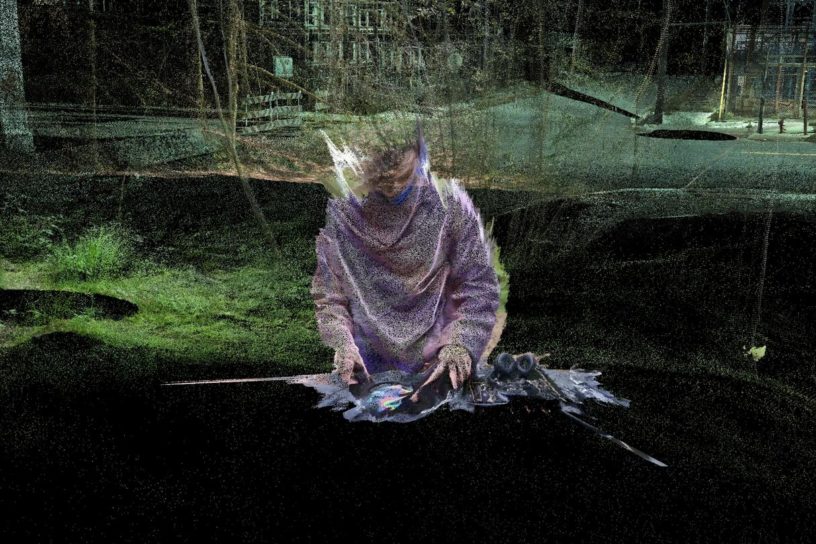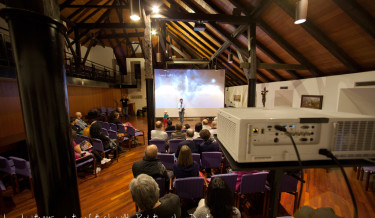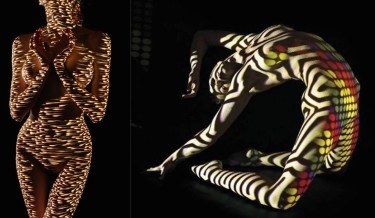Architects certainly think of the future when designing buildings, yet few approach their practice like a science fiction author, or even a skeptical futurist. Speculative architect and filmmaker Liam Young, on the other hand, actually uses science fiction and film to explore the impact of new technologies on cities, as he did a few years ago with his imaginary future city animations. In his latest exhibition, New Romance, now on view at Columbia University’s Arthur Ross Architecture Gallery, Young presents three films that imagine love stories that were, respectively, filmed with drones, captured with LIDAR (laser scanning) technology, and made using digital detritus from render farms. The films, much like Black Mirror‘s dystopian satires of new technology, are part of what he calls a “visionary present” in which speculates about how existing and emerging technologies will reshape cities, cultures, and people.
“I’m interested in exploring the power of fiction as a tool to examine the architectural urban and global implications of emerging technologies,” Young tells Creators. “What we’re trying to do is explore new cultures that emerge around these new technologies like drones. We’re doing this with all three films.”
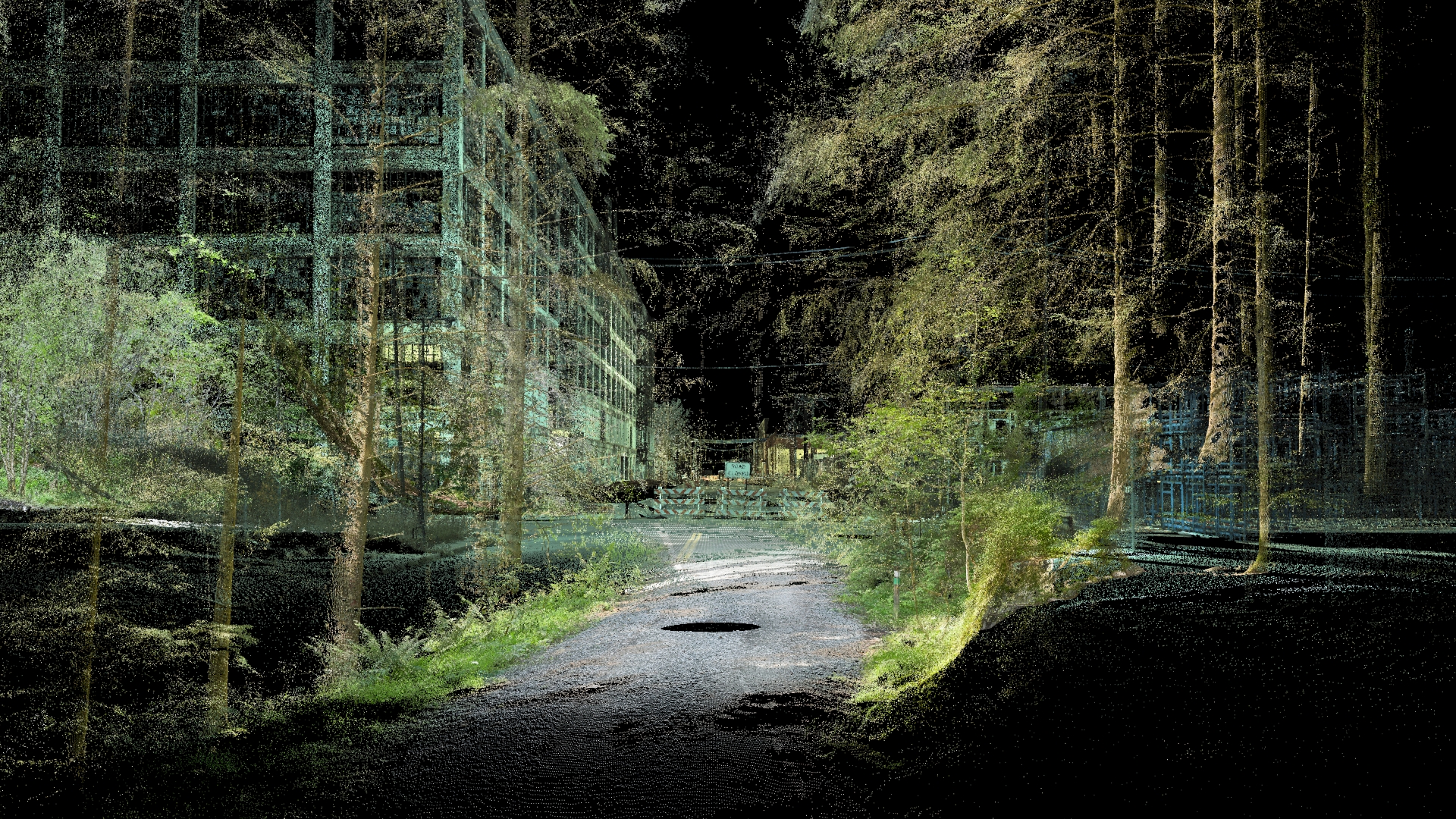
Still from Where the City Can’t See. Lead image: Still from Where the City Can’t See. All images courtesy of the artist.
“In the media, people talk about drones as either as these things that fly overhead dropping bombs in Afghanistan or they talk about them in terms of privacy,” says Young. “But, when they become as ubiquitous as pigeons we start to find new applications for them, and they start to become cultural objects that get used in unexpected ways.”
The William Gibson quote “the street finds its own uses for things” informed all three films. The characters of In The Robot Skies, two young couple in love (one of whom is under arrest at her council estate), have hacked a drone to pass messages back in forth in defiance of an electronic communications ban. Young and his collaborator, fiction author Tim Maughan, imagined hacker and graffiti culture inspiring the two kids to repurpose drones. In the opening scenes, a surveillance drone is tagged with graffiti, while the two have decorated their own drone with personalized ornaments.
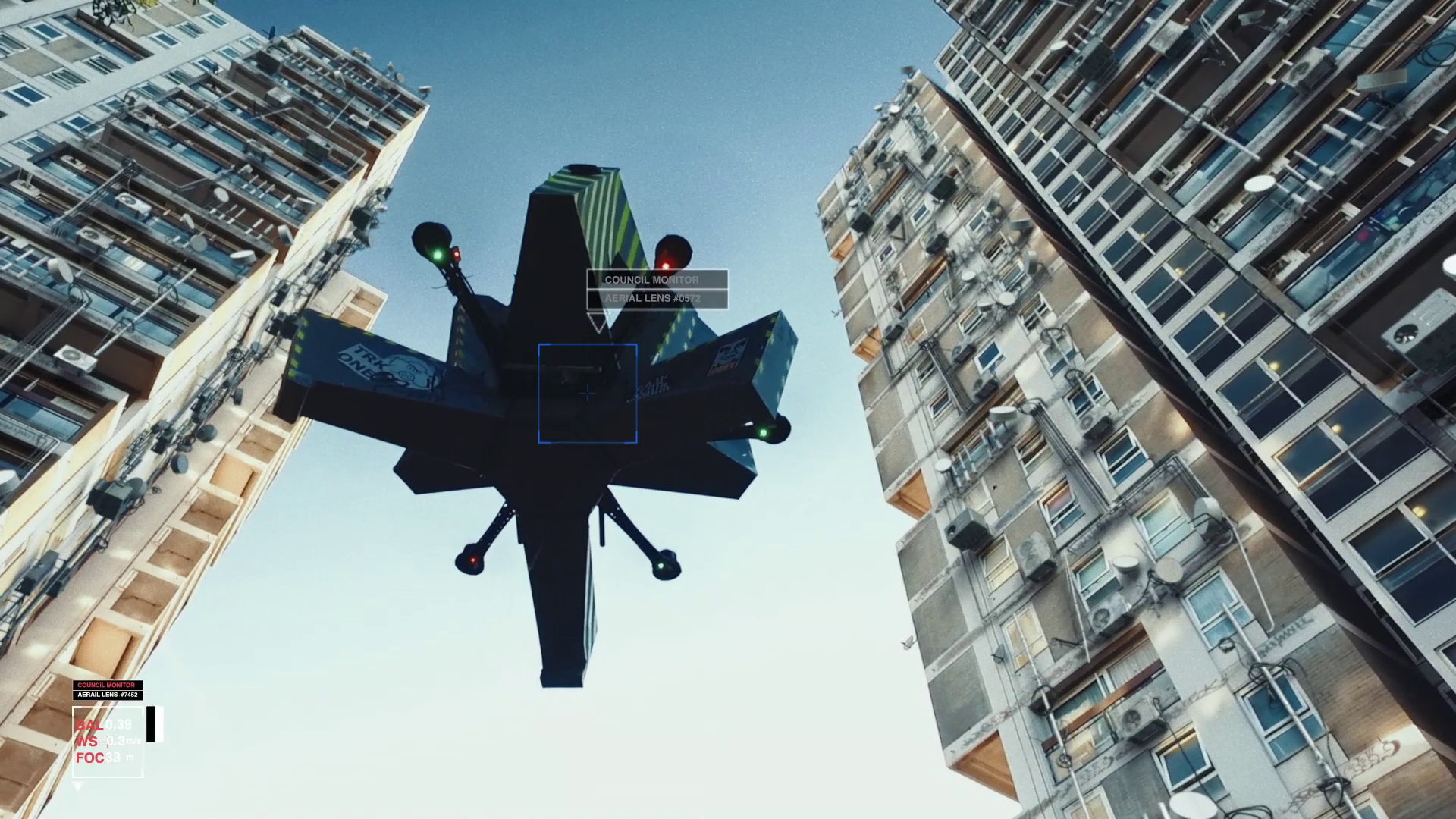
Still from In the Robot Skies
This creative hacker mindset emerges in Young’s second film in the exhibition, Where the City Can’t See. Young shot the film entirely with LIDAR laser scanners, a technology currently being used in driverless cars to map and navigate streets, and which will soon be used to map cities and supplant CCTV. Set in the fictional Detroit Economic Zone (DEZ), owned and controlled by China, two young car factory workers live under constant LIDAR surveillance, which renders DEZ—and the entire film—in a surreal point cloud. The characters are part of a rave subculture that dons LIDAR scrambling glitch hoodies and tribal masks to find a time and space of anonymity.
“You used to go to warehouse raves because that is where you’d find gaps where the police weren’t patrolling, so you could turn the music up, take drugs and dance,” says Young. “But, in a city that sees everything, when it has these roving sensor networks of the driverless cars, where do you find those spaces of exception where you do what you want to do? We’re exploring rave subcultures and how they’ve learned to hack smart city technology to find places to party.”
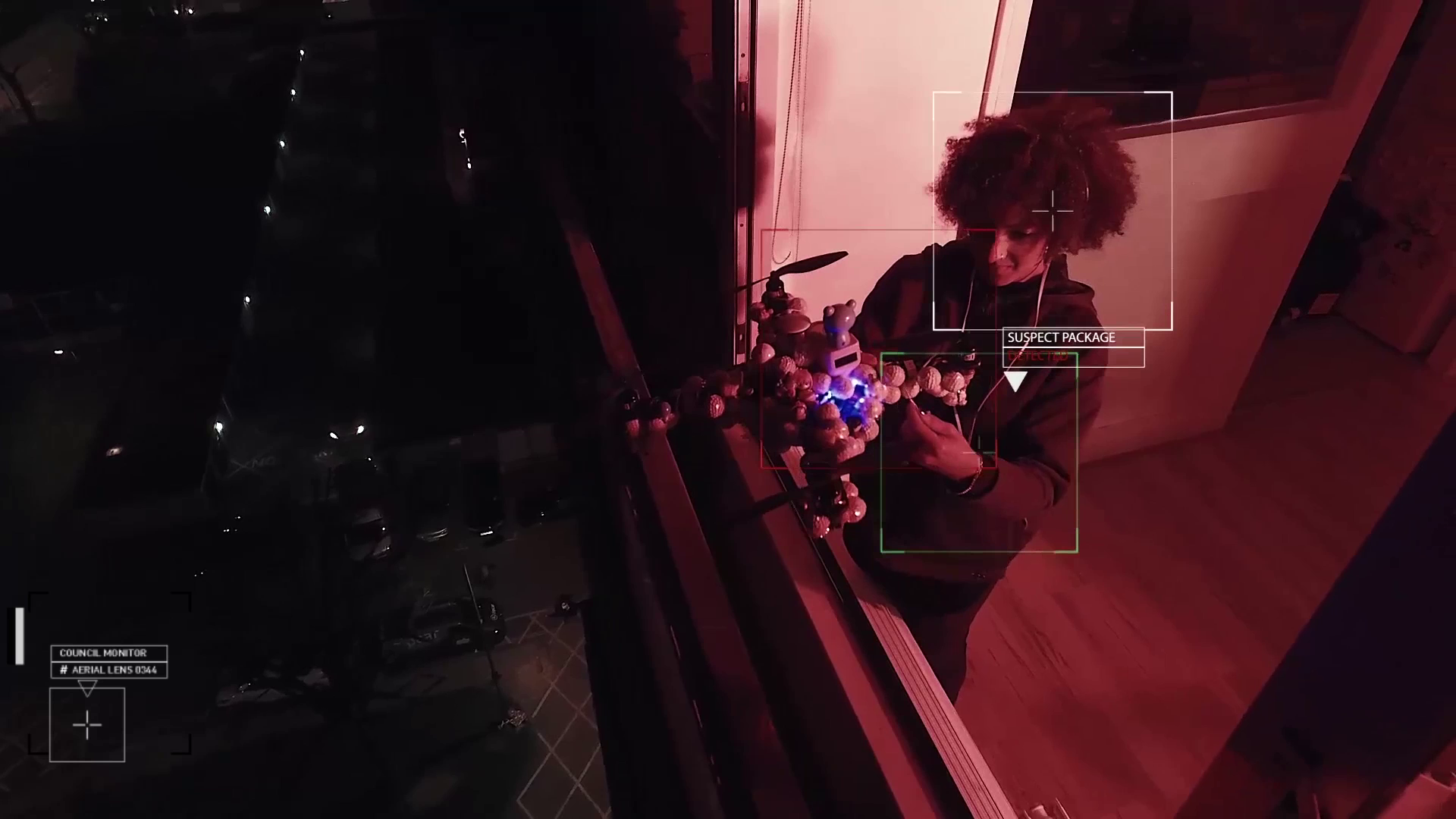
Still from In the Robot Skies
Young even worked with an old-school Detroit DJ to compose the film’s original soundscapes. He says the low end rumbling bass tones actually scrambled the LIDAR scanners, which Young used to his advantage, allowing the ravers to disappear into clouds of static as the film ends.
The escape in Young’s new mixed reality film, Renderlands, is far less uplifting. In it, Young explores the life of a 3D modeler at a render farm in India. Trapped at work for long hours, the character imagines a virtual world where he lives with his dream girl. To make Renderlands, Young scavenged digital detritus from VFX movie models and 3D game assets that remain on studio hard drives—the remnants of what he says are cancelled production jobs.
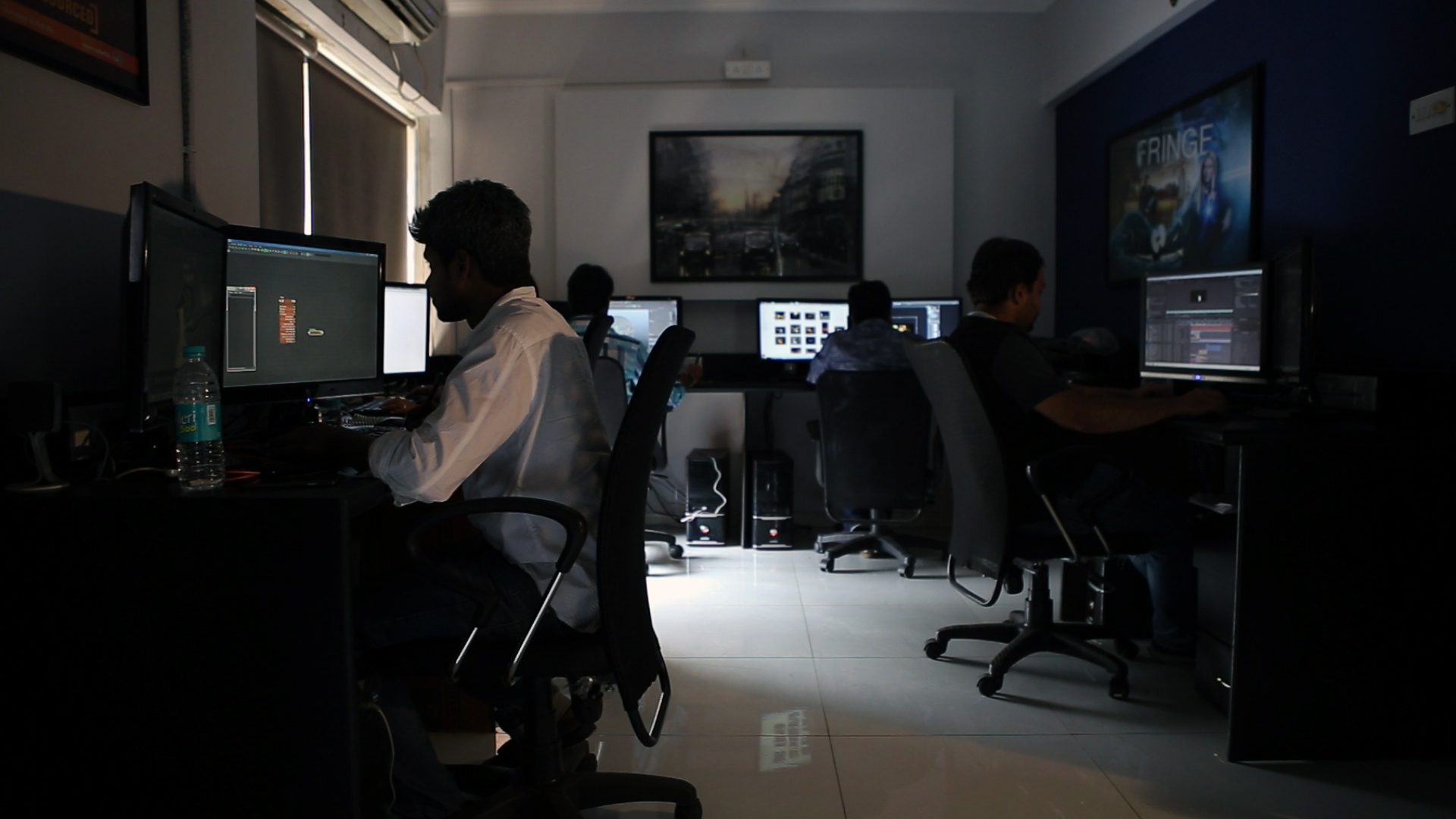
Still from Renderlands
“Renderlands is about the implications of outsourcing facilitated by the network that connects the studio in LA, where I’m based, to render farms and animation studios in India,” says Young. “What does it mean when they spend their entire lives immersed in these imaginary worlds that they’re never going to access? What does this do to their hopes and dreams, to their perception of the West?”
Young wanted to focus on these workers and their dreams for the first time. So, the VR world that the worker escapes to is a sort of idealized, utopian version of California filled with golden sunsets, a muscle car, an American diner, and, of course, a blonde beauty—all things that the character and actual render farm employees work on but will likely never see.
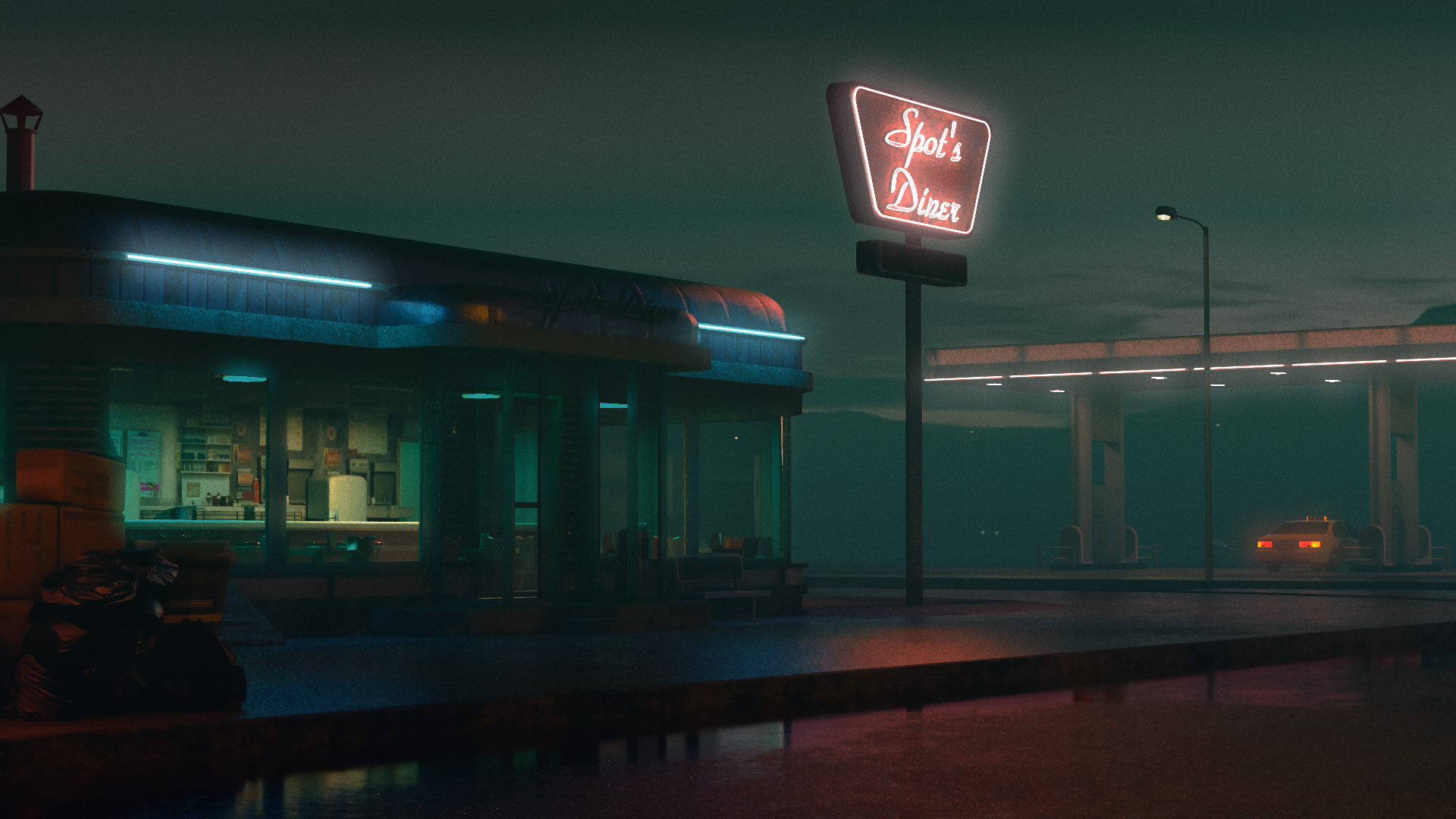
Still from Renderlands
“All of these technologies are not solutions to anything—they’re not solutions to cities or ourselves,” Young says. “What technology does is exaggerate the contradictions that already exist. Any one of these technologies can be an extraordinary utopian moment that brings us together, or they can be used to overthrow an election, hack someone’s credit card details, or groom a 14-year-old girl for sex.”
“A city isn’t just one type of person, it’s many types of people,” he adds. “It’s rich people, poor people, it’s people who are going to do good and wonderful things and people who are going to cause shit and trouble. And whenever we’re imagining designing for these cities and these technologies we need to explore all sides of the spectrum of what happens when a technology is rolled out.”
Click here to see more of Liam Young’s work.
Via Creators
Follow our FB page Lumen

